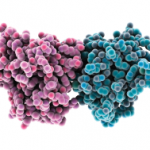Dr. Pennathur, working in collaboration with his colleague at the University of Michigan, Mariana Kaplan, MD, has hypothesized that the inflammatory factors associated with RA might inhibit the cardioprotective benefits typically found with high-density lipoproteins. In his ongoing research, Dr. Pennathur and colleagues are trying to unravel specifically what it is about oxidized, dysfunctional HDL and its related proteins that might contribute to a higher risk of cardiovascular disease.
To date, they have enrolled 70 RA patients, of whom 25 individuals have completed the study, he said. Preliminary results show that the levels of oxidized HDL are “markedly elevated” in people with RA compared with healthy individuals, he said.
Protein composition analyses in a subset of patients revealed roughly three dozen shared proteins in the two groups, as well as several proteins that are distinct to the RA patients studied. These include proteins involved in inflammation, lipid metabolism, oxidation reactions, and immune response. Dr. Pennathur said that the final tally might be higher or lower, based on the confirmatory studies. One possibility that will be studied is whether the dysfunctionality of the HDL is related in some way to those RA-specific proteins, he said.
If researchers could identify a “protein signature” that is associated with a higher risk of developing cardiovascular disease, then RA patients could be screened with a blood test early in their disease development, he said. “I think this could be an early application of this research, to risk-stratify patients,” said Dr. Pennathur in comments following the meeting. In the future, once there is better insight into the HDL biology, targeted treatments could be developed, he said.
Targeting Extracellular Cyclophilins
In her laboratory work at the George Washington University in Washington, D.C., immunologist Stephanie Constant, PhD, has been working to understand better the immune factors that regulate inflammation, with an initial focus on the lung. Over time, she has increasingly delved into the role of cyclophilins, specifically extracellular cyclophilins, investigating their function in RA as well as asthma and lung injury.
Although cyclophilins are typically intracellular, in times of bodily stress, cells will secrete the proteins, allowing them to be detected outside the cell, said Dr. Constant, associate professor in the Department of Microbiology, Immunology, and Tropical Medicine. She noted that a prior study identified high levels of extracellular cyclophilins in the synovial fluid of individuals with RA.
Based on studies showing that extracellular cyclophilins can attract proinflammatory leukocytes from the circulation into tissues, Dr. Constant is investigating whether targeting extracellular cyclophilins will reduce the recruitment of proinflammatory leukocytes into inflamed tissues, she said. To that end, Dr. Constant has been working with two analogs, both derivatives of
